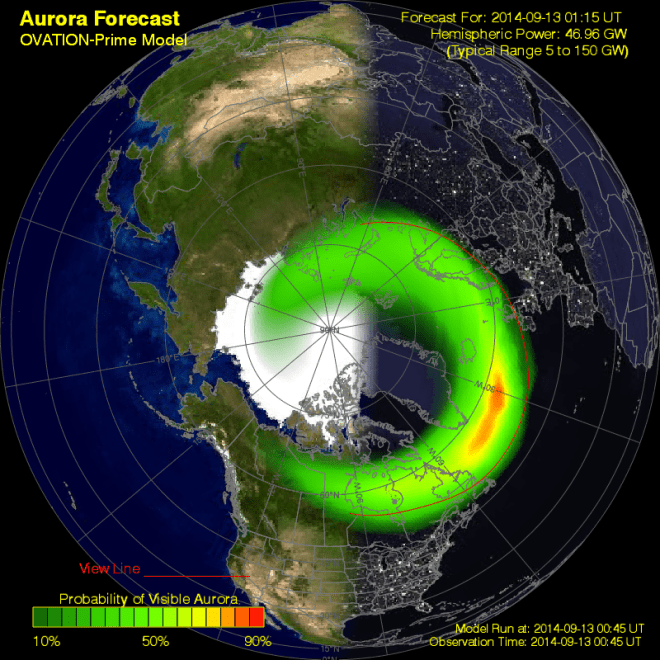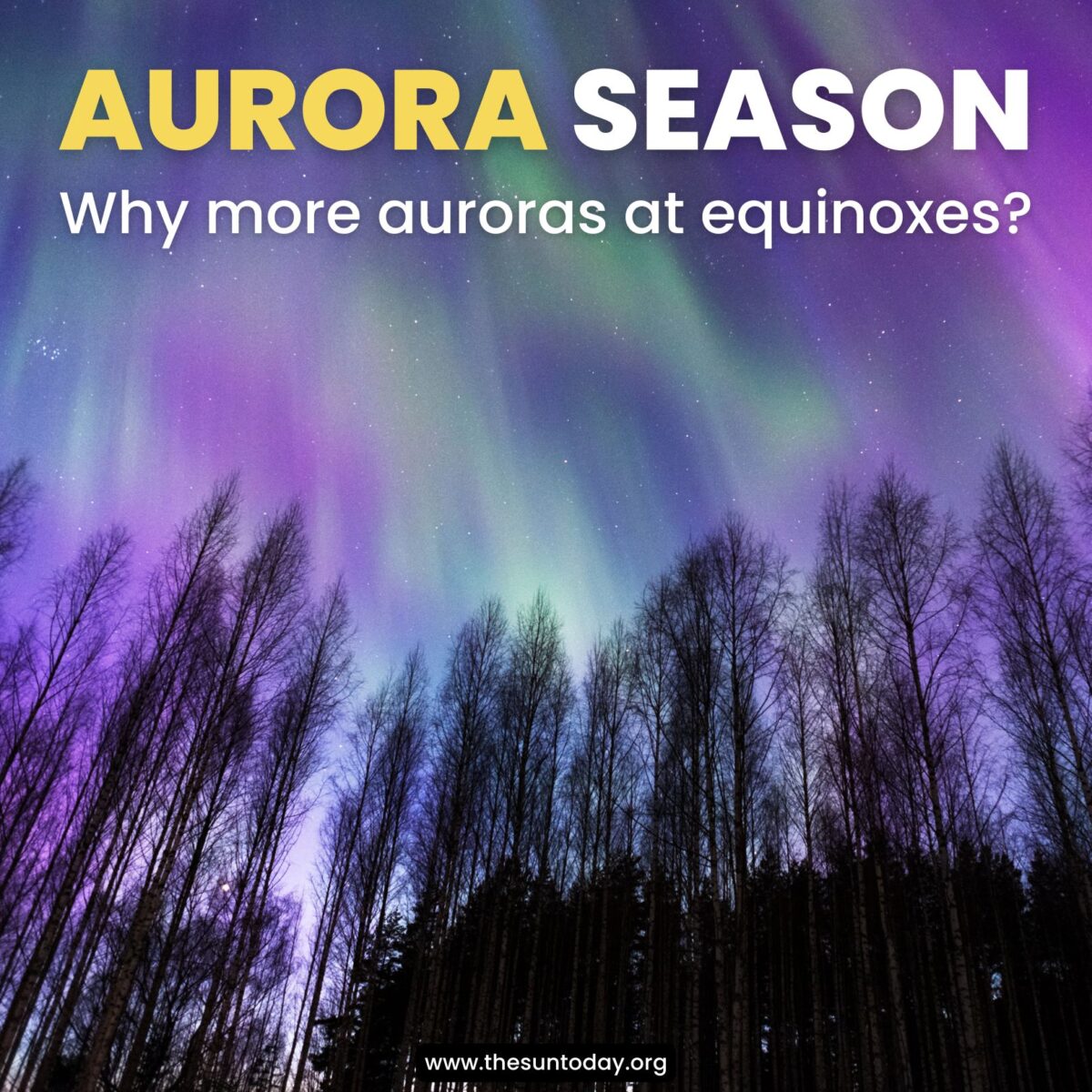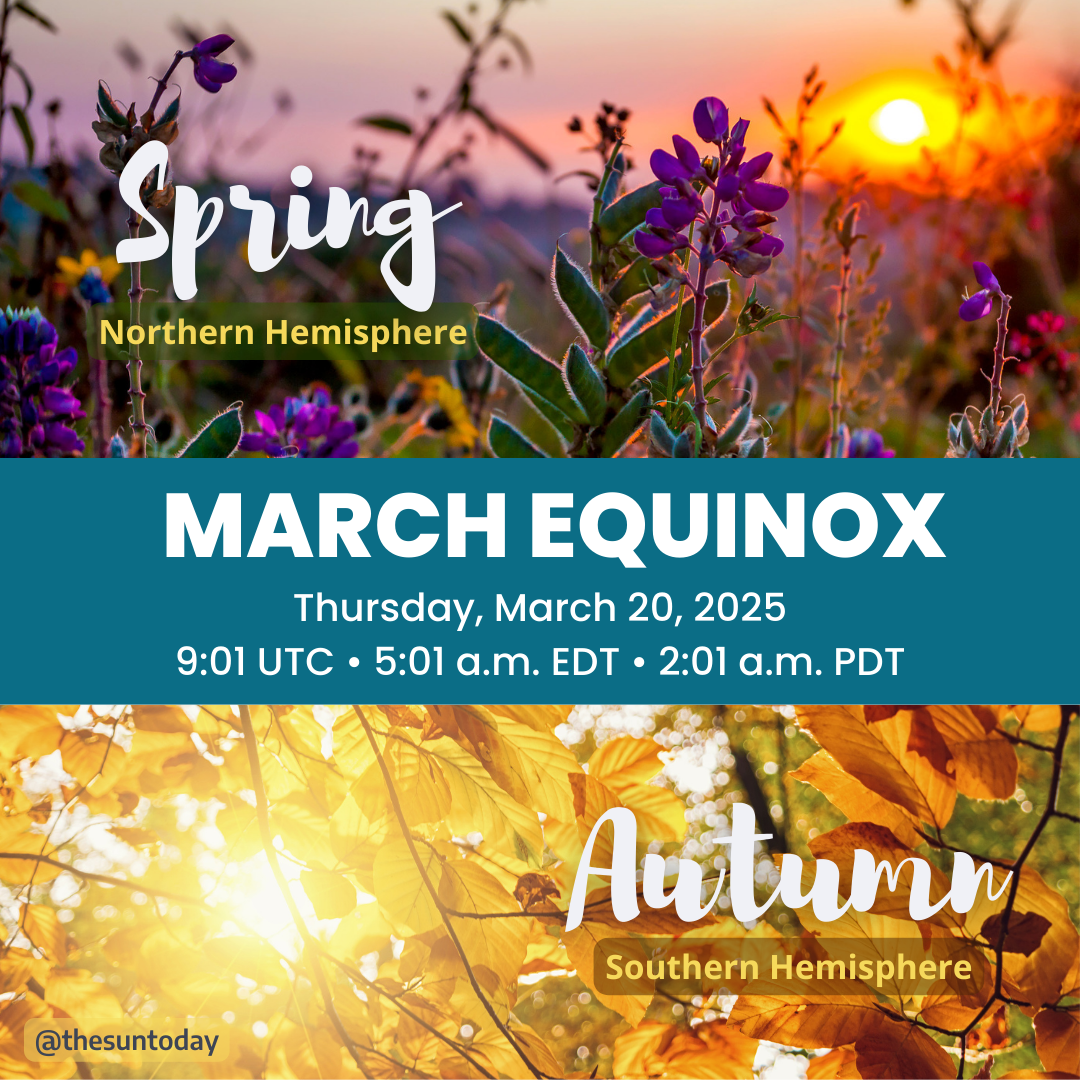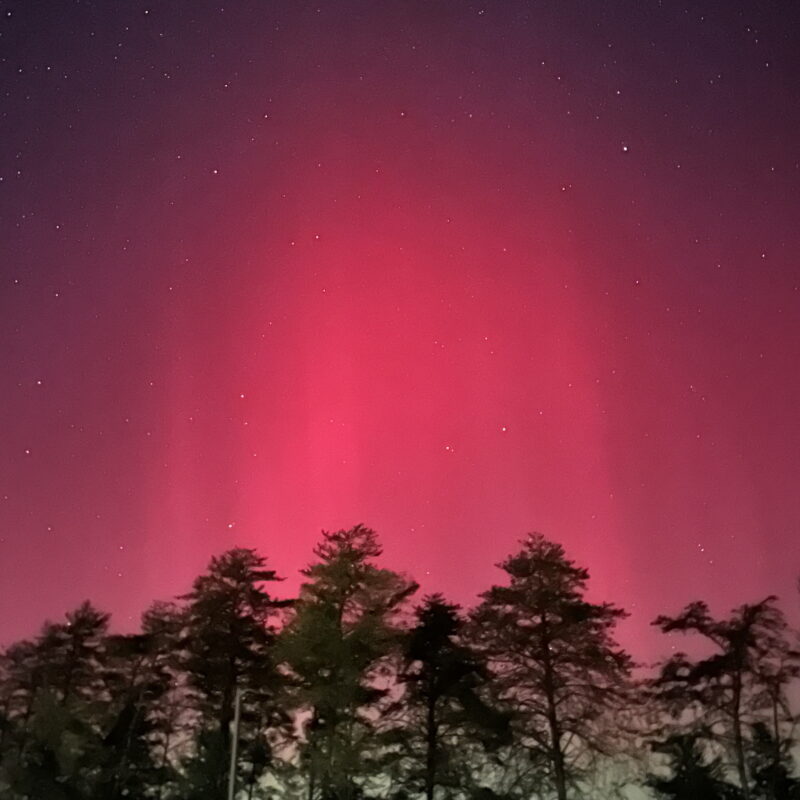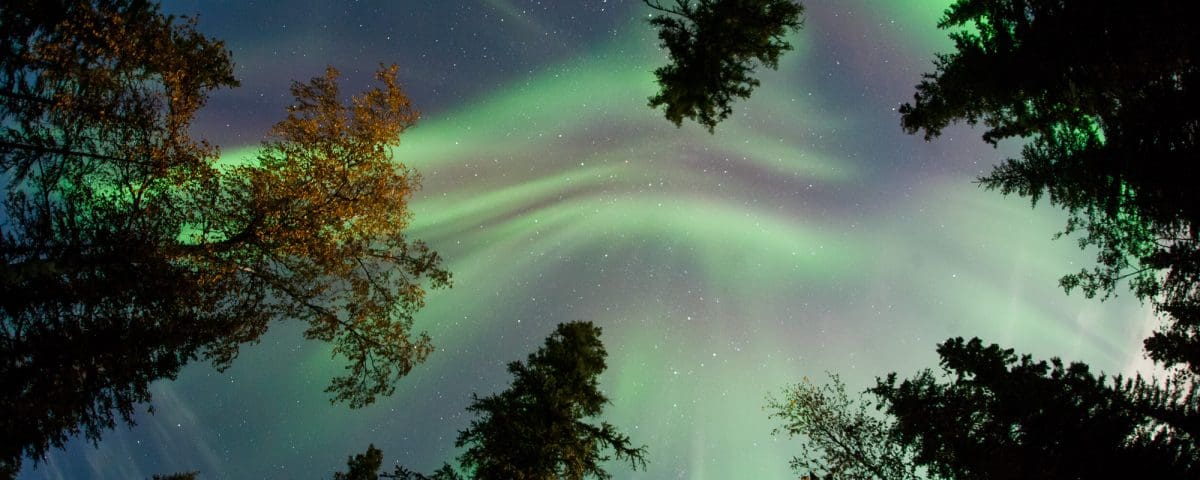
UPDATE #4 (13:30 UT 9/13)) – The storm is subsiding but beautiful aurora were had by many. Even down to the northern US like Maine. “I took the picture from Casco, Maine, facing north towards the Presidential Range in New Hampshire,” says photographer John Stetson. “Red, purple, green, blue–all the colors were there!” Credit: John Stetson and shared by spaceweather.com
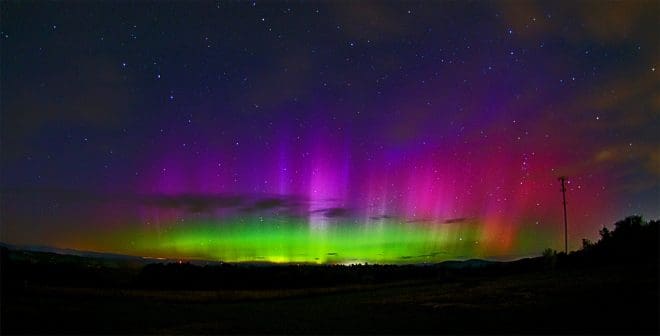
Aurora captured by John Stetson in Quaker Ridge, Casco, Maine facing north towards the Presidential Range in NH. shared at spaceweather.com
UPDATE # 3 (22:00 UT) – Towards the end of 9/12 Kp index reached 7 or G3 geomagnetic storm level. Here is the current Ovation auroral model. The image shows both where the aurora is most likely to be observed as well as how bright it might be. The oval will start of cover more of North America as the night goes on. Aurora might be seen down to areas like Illinois, the mid-Atlantic states, Canada and Northern Europe.
UPDATE #2 (18:30 UT) – As of 17:40 UT (1:40 pm EDT) we reached a Kp index of 6 or G2 storm.
UPDATE #1 (18:00 UT) – The CME shock reached Earth just before noon EDT. The total magnetic field increased to a strong 28 nT, with the Bz or North/South component oscillating between a moderate -13 and +20 nT. As the CME passes Earth, there is a chance that Bz could turn steady southward and thus become more geo-effective. A negative Bz or strong southward component allows more energy to flow into the magnetosphere greatly increasing the possibility of the stronger (G3) storm.
A geomagnetic storm up to about G2 is expected later today (9/12) and the storm level is predicted to increase to G3 level into tomorrow. If the storm reaches G3, aurora could be seen down to areas like Illinois and mid-Atlantic states. G2 is more like Idaho and New York State.
Hopefully, the show has only begun! (Weekend Aurora in the Forecast!)
Aurora were seen from Alaska and Northern Canada down to the northern US. Here is a corona aurora from Fairbanks, Alaska captured by JN Hall and an aurora in Munger, MN, USA by Matthew Moses, both shared through spaceweather.com. The first (smaller event) hit last night and now we wait for the larger, more direct impact from the CME associated with the X1.6 flare (earlier post.) NOAA has predicted a G3 geomagnetic storm for late Sept. 12 or early Sept. 13. So, there may be some spectacular lights to come.

Aurora taken by JN Hall on September 12, 2014 in Fairbanks, AK, US. The photo was shared on spaceweather.com
The CME from the 9th reached the ACE spacecraft at 22:56 UT. Here is a look at the change in the solar wind at ACE due to the current CME impact.
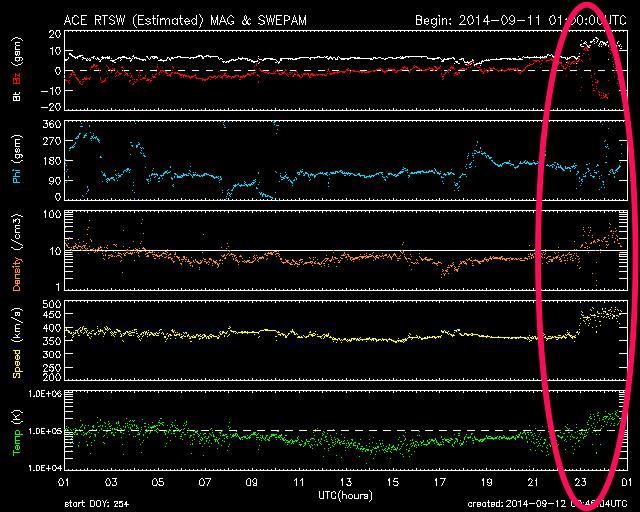
The solar wind parameters (e.g. density, speed, etc) at ACE changed abruptly due to the CME from Sept. 9 passing the spacecraft.
The CME reached Earth at 23:46 UT. The Kp index reached 5, the G1 geomagnetic storm level (NOAA Space Weather Scale descriptions are found at www.swpc.noaa.gov/NOAAscales.) NOAA predicted a G2 (Kp=6) but that level was never reached.
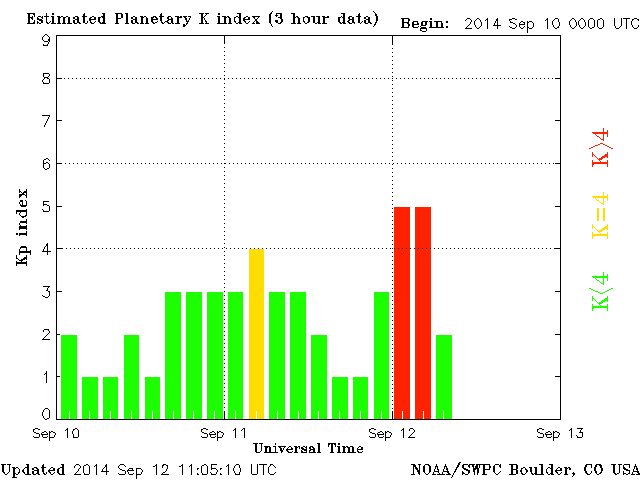 As we can see from the aurora photos above, that was enough to stir up some nice aurora. But it is probably not over. The CME associated with the X1.6 (earlier post) will probably reach us around midday on the 12th though errors in the estimates could mean it will be here several hours earlier or later. More geomagnetic storms and aurora should follow. Stay Tuned!
As we can see from the aurora photos above, that was enough to stir up some nice aurora. But it is probably not over. The CME associated with the X1.6 (earlier post) will probably reach us around midday on the 12th though errors in the estimates could mean it will be here several hours earlier or later. More geomagnetic storms and aurora should follow. Stay Tuned!
credit: NASA/ACE/NOAA/spaceweather.com/J. Hall/M. Moses


